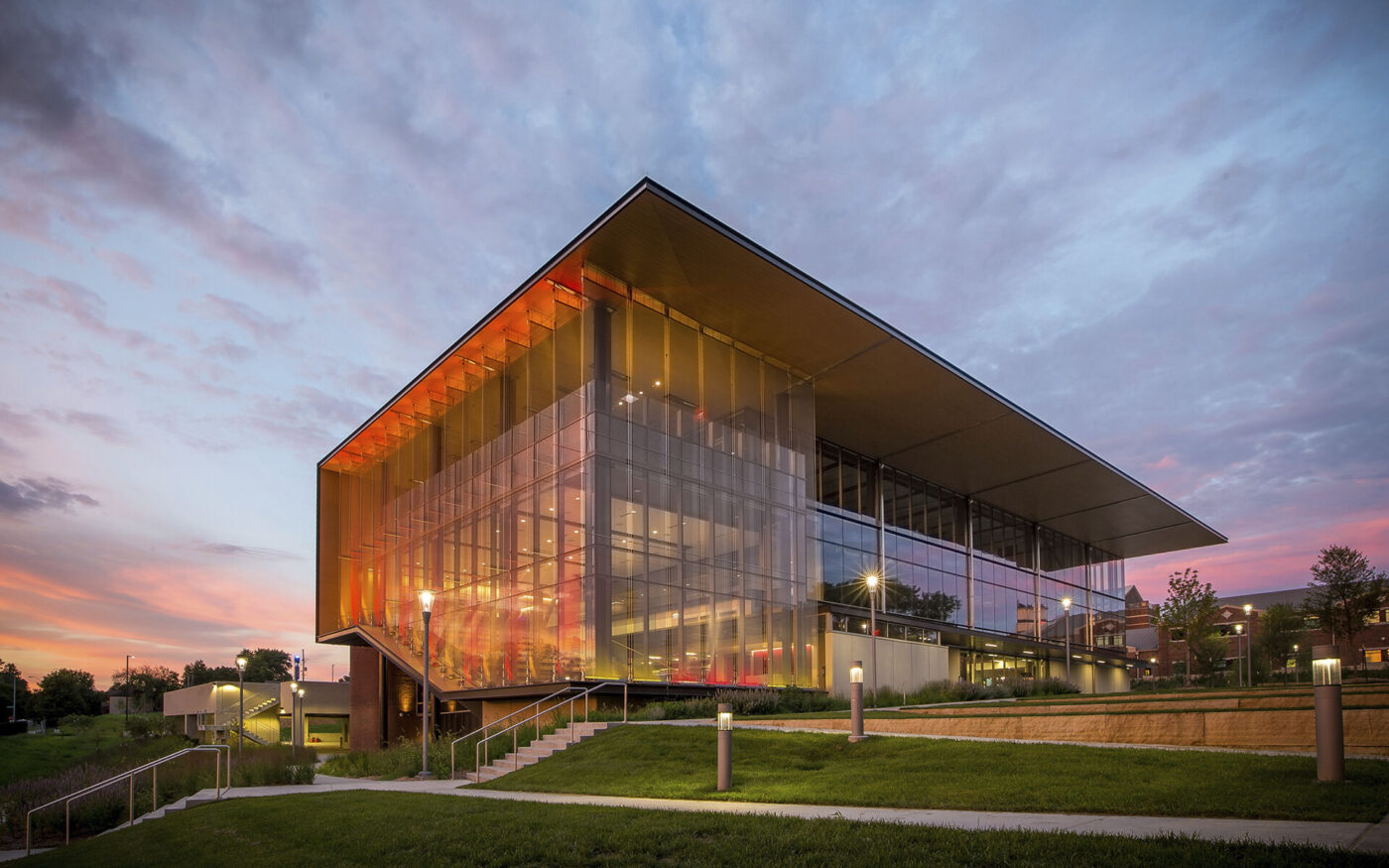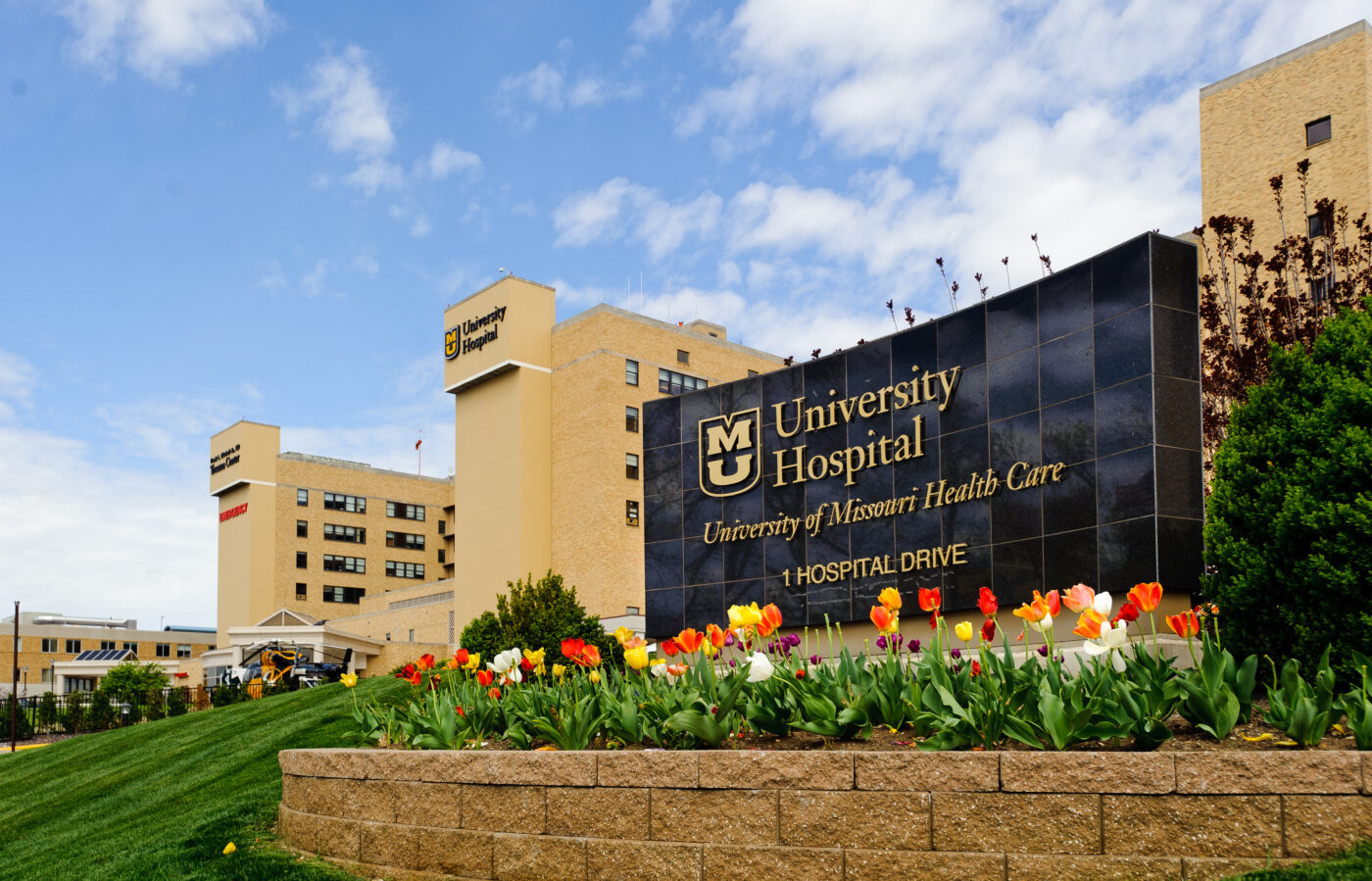There is a rich history of medical schools in Missouri, from the founding of osteopathic medicine to the construction of the first medical school in the midwest. Today, there are six medical schools in the state of Missouri, each with a unique mission and approach to medical education.
In this guide, we’ll go over key metrics for each school and discuss what it takes to get accepted to each of the medical schools in Missouri.
Medical schools in Missouri include:
- A.T. Still University–Kirksville College of Osteopathic Medicine (ATSU KCOM)
- Kansas City University College of Osteopathic Medicine (KCU COM)
- Saint Louis University School of Medicine (SLU SOM)
- University of Missouri Columbia School of Medicine (MU SOM)
- University of Missouri Kansas City School of Medicine (UMKC)
- Washington University School of Medicine in St. Louis (WUSTL SOM)
If you’re look for medical schools in St. Louis, the Saint Louis University School of Medicine and Washington University School of Medicine in St. Louis attract applicants hoping to live in this vibrant and diverse city.
For those looking for medical schools in Kansas City, you’ll be considering the Kansas City University College of Osteopathic Medicine.
Finally, DO schools in Missouri include A.T. Still University–Kirksville College of Osteopathic Medicine and Kansas City University College of Osteopathic Medicine.
What Does It Take To Get into Medical Schools in Missouri?
At International Medical Aid, we work around the clock to provide aspiring physicians with free in-depth resources and support so that they can make the most informed decisions about their medical school applications.
Of course, nothing beats one-on-one guidance. Our medical school admissions consulting provides you with expert support through every stage of the application process. Whether it’s crafting impactful personal statements and secondary essays or developing an effective, tailored overall application strategy — we’ve got the experience and knowledge to help you get accepted to your dream school.
A crucial aspect of building a competitive medical school application is gaining meaningful hands-on clinical experience. Our voluntary healthcare internships abroad include service-learning, physician shadowing, didactics in multiple specialties, access to Harvard’s online medical courses, and much more. These internships provide powerful centerpieces for applications and interviews and help us serve some of the most medically underserved communities in the world.

A.T. Still University–Kirksville College of Osteopathic Medicine (ATSU KCOM)
ATSU KCOM is the original osteopathic medical school, established by the founder of osteopathic medicine, Andrew Taylor Still. With over 120 years of medical education experience, ATSU KCOM is committed to educating service-oriented physicians grounded in the philosophy of whole-person healthcare.
ATSU’s Kirksville College of Medicine offers a four-year DO degree. A.T. Still University has campuses in Missouri, Arizona, and California as well as online programs. The school has 11 doctoral programs (such as Health Science, Audiology, and Nursing) and 13 medical master’s programs.
School Highlights
A.T. Still University’s Kirksville College of Medicine has a legacy of producing osteopathic physicians committed to practicing in rural and underserved communities. Out of every medical school in the U.S., ATSU KCOM has some of the most graduates practicing in primary fields, rural areas, and medically underserved areas. The school has a 98% residency match rate and 56% of graduates enter family medicine, internal medicine, or pediatrics. ATSU KCOM is a private school.
ATSU KCOM U.S. News and World Report Rankings:
- #5 in Most Graduates Practicing in Primary Care Fields
- #6 in Most Graduates Practicing in Rural Areas
- #24 in Most Graduates Practicing in Medically Underserved Areas
ATSU KCOM Med-Colleges.com Ratings:
- Overall: 4.5/5
- Curriculum: 4.5/5
- Teaching: 4.5/5
- Safety: 3/5
Med.Colleges.com also ranks ATSU KCOM #41 in Alternative Medicine (national) and #7 in Biomedical Sciences (state).
Selection Factors
The Office of Admissions evaluates candidates in the main areas, “academic accomplishment, personal characteristics of a healthier, and propensity to serve the underserved.”
ATSU KCOM’s admissions faculty has written about what stands out to them when making admissions decisions:
- Service-oriented clinical exposure
- Letters of support for DO physicians and volunteer/outreach supervisors
- Demonstrations of academic acheivement and time-management skills
How Competitive is A.T. Still Kirksville College of Osteopathic Medicine?
To apply to the Kirksville College of Osteopathic Medicine, you must have a minimum 2.8 overall GPA and a 2.8 science GPA. There is no minimum MCAT score for most applicants (early-decision applicants must have an MCAT score of at least 504 and a 3.5 GPA).
Here are some key admissions statistics to give you a better idea of what makes for a competitive applicant to ATSU KCOM:
- Acceptance Rate: 3% – 9%
- Average Cumulative GPA: 3.69
- Average Science GPA: 3.64
- Average MCAT score: 504
The most recent secondary application for ATSU KCOM includes three essay questions with responses limited to 500 words.
For an in-depth look at ATSU KCOM’s ideal applicants, admissions requirements, and more, see our detailed guide.

Kansas City University College of Osteopathic Medicine (KCU COM)
KCU’s College of Osteopathic Medicine has some of the highest medical school enrollment rates in the country and is a major contributor to the region’s physician population. It was founded in 1916 and is a private medical school.
KCU COM offers a four-year DO degree program and dual DO degrees in Public Health, Bioethics, and Healthcare Leadership.
School Highlights
KCU’s College of Osteopathic Medicine is the largest provider of physicians in Missouri and the second-largest in Kansas. In past years, KCU COM classes have held the highest NBOME scores in the nation. The school is also known for actively recruiting underrepresented and non-traditional medical students.
KCU COM U.S. News and World Report Rankings:
- #23 in Most Graduates Practicing in Medically Underserved Areas
- #17 in Most Graudates Practicing in Primary Care Fields
- #25 in Most Graduates Practicing in Rural Areas
KCU COM Med-Colleges.com Ratings:
- Overall: 5/5
- Curriculum: 5/5
- Teaching: 4.5/5
- Safety: 5/5
Med-Colleges.com also ranks KCU COM #18 in Alternative Medicine (national) and #70 in Best Medical Schools (regional).
Selection Factors
Beyond completing a four-year degree at an accredited university and fulfilling the required coursework, KCU COM does not list a minimum GPA or MCAT for applicants.
A competitive application takes more than meeting minimum requirements, though. The admissions committee at KCU COM recommends the following:
- Minimum 80 hours of shadowing a physician
- Volunteer in a health care related setting
- Work experience in a health care field (EMT, nurse, etc)
- Minimum two leadership roles in clubs/community organizations/work experience
- Research experience
- Involvement with a minimum of four community service organizations
- Domestic/international mission trip
- Commitment of more than two years to an organization/club/job
How Hard Is It to Get Into Kansas City University College of Osteopathic Medicine?
Here are some key metrics from KCU COM’s 2021-2022 application cycle to give you a better idea of where you stand:
- Acceptance Rate: 9% – 21%
- Average Cumulative GPA: 3.64
- Average Science GPA: 3.57
- Average MCAT Score: 507
The 2021-2022 secondary application for KCU COM included three essay questions with responses limited to 2500 characters (about 350 to 625 words).
There’s a lot more about applying to KCU COM. Our guide, How to Get Into KCU: The Definitive Guide, dives deeper into the school’s selection factors, goes over the secondary application, and much more.

Saint Louis University School of Medicine (SLU SOM)
Both of the medical schools in St. Louis were established over a century ago, but SLU SOM was the first medical school founded in the city. It’s also the oldest of the private medical schools in Missouri. Its long tradition of medical education and high regional rankings attract in-state students and beyond.
SLU SOM offers a four-year MD program and several dual MD degrees, including MD/PhD (MSTP), MD/PhD (Health Outcomes Research), MD/MPH, and MD/MBA.
School Highlights
The Saint Louis University School of Medicine is tied for Missouri’s best primary care medical school and places second in medical research. A recently constructed 10-story research center has added nearly 100 new research labs to the campus, contributing to SLU SOM’s acclaimed research in heart and lung disease, cancer, infectious disease, and neurological disorders.
In 2006, the school developed the SLUMS examination, which is used by physicians nationwide to quickly screen for cognitive impairments.
SLU SOM U.S. News and World Report Rankings:
- #73 in Best Medical Schools: Research
- #56 in Best Medical Schools: Primary Care
- #97 in Most Diverse Medical Schools
- #70 in Most Graduates Practicing in Primary Care Fields
- #89 in Most Graduates Practicing in Medically Underserved Areas
- #112 in Most Graduates Practicing in Rural Areas
SLU SOM Med-Colleges.com Ratings:
- Overall: 5/5
- Curriculum: 5/5
- Teaching: 4.5/5
- Safety: 1/5
Med-Colleges.com also ranks SLU SOM #48 in General Medicine (national) and #2 in Best Clinical Psychology School (regional).
Selection Factors
Admissions at SLU SOM looks for applicants with a demonstrated commitment to excellence, leadership, and service. The admissions committee also considers an applicant’s motivation for a career in medicine, as well as their understanding of the responsibilities of the profession. Familiarity with research is also weighed favorably.
Admissions faculty at SLU SOM state that they prioritize academic excellence and discipline over pre-med experience. However, they do consider all aspects of an applicant’s profile and want candidates to have a “well-rounded” experience.
How Competitive is Saint Louis University School of Medicine?
There are no MCAT or GPA minimums at SLU SOM. However, you can look to the average academics of accepted students for an idea of how competitive the application pool is.
- Acceptance Rate: 7.3% – 8.2%
- Average Cumulative GPA 3.86
- Average Science-Math GPA 3.83
- Average MCAT Score 512
SLU SOM included five essay questions in its 2021-2022 secondary application. We go over these questions and dive into what it takes to get into SLU SOM in our definitive application guide.
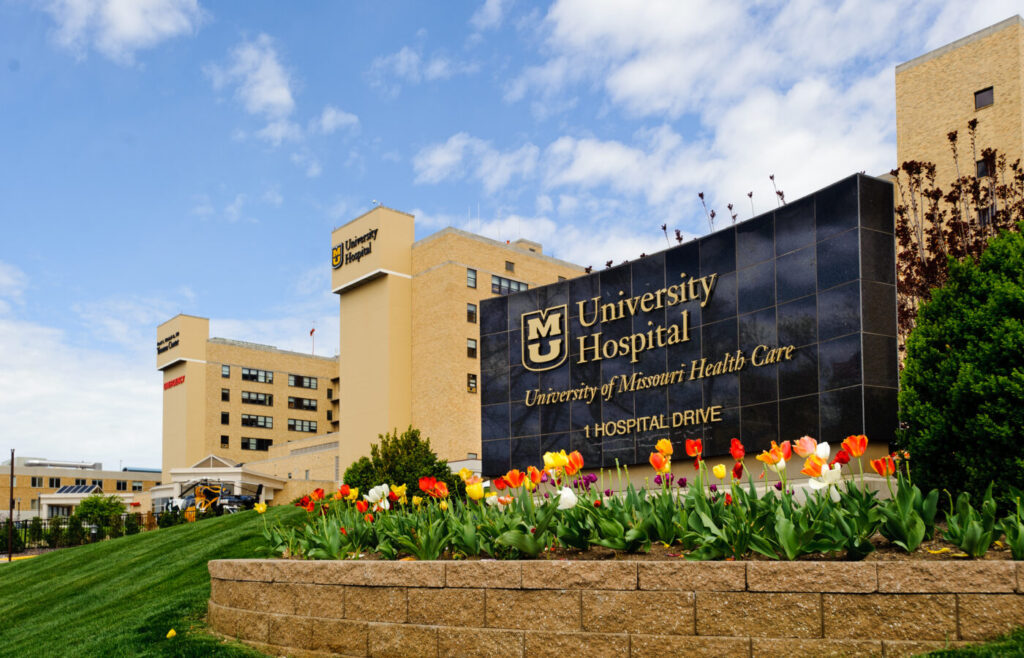
University of Missouri Columbia School of Medicine (MU SOM)
MU SOM was the first public medical school in the region and boasts a 97% residency match rate. Its emphasis on patient-based learned practices has helped graduate over 7,000 practicing physicians.
The school offers a traditional four-year MD degree and an MD/PhD program.
School Highlights
The patient-based learning model employed by MU SOM attracts aspiring medical students who hope to learn theory through practice. The curriculum uses real-world clinical experiences and cases to teach students practical applications of academic concepts. Small-group and self-directed learning practices are also emphasized.
The school’s Family Medicine department has ranked top ten in the nation for the past twenty years.
MU SOM U.S. News and World Report Rankings:
- #80 in Best Medical Schools: Research
- #67 in Best Medical Schools: Primary Care
- #18 in Most Graduates Practicing in Medically Underserved Areas
- #51 in Most Graduates Practicing in Rural Areas
- #70 in Most Graduates Practicing in Primary Care Fields
MU SOM Med-Colleges.com Ratings:
- Overall: 5/5
- Curriculum: 5/5
- Teaching: 5/5
- Safety: 1/5
Med-Colleges.com also ranks MU SOM #82 in General Medicine (national) and #1 in Sonography and Ultrasound (regional).
Selection Factors
Alumni, faculty, and students comprise the admissions committee that evaluates candidates at MU SOM. This committee considers “personal character, clinical experience, intellectual ability, and cultural competency” to be crucial aspects of your application. While your academic performance bears weight in your admissions decision, the committee is willing to overlook less-than-ideal grades for those with outstanding non-academic experiences or evidence of intellectual excellence outside of the classroom.
In-state applications must have a GPA of at least 3.0, both cumulative and in the sciences. There is no minimum MCAT score for in-state applicants. Out-of-state applicants must meet the following criteria, depending on their GPA:
- 3.0 GPA: MCAT Score of 510-528
- 3.2 GPA: MCAT Score of 506-509
- 3.4 GPA: MCAT Score of 502-505
- 3.6 GPA: MCAT Score of 498-501
- 3.8 GPA: MCAT Score of 494-497
The admissions committee may make exceptions to the above criteria if an applicant has completed sufficient graduate-level coursework.
How Competitive is University of Missouri Columbia School of Medicine?
- Acceptance Rate: 6% – 8.3%
- Average Cumulative GPA: 3.81
- Average Science/Math GPA: 3.75
- Average MCAT Score: 509
- 88% from Missouri
Three essay questions with 2,000 character responses were included in MU SOM’s 2021-2022 secondary application.
Our definitive guide, How to Get Into University of Missouri Medical School in 2022, covers the school’s programs, selection factors, application questions, and more in great detail.
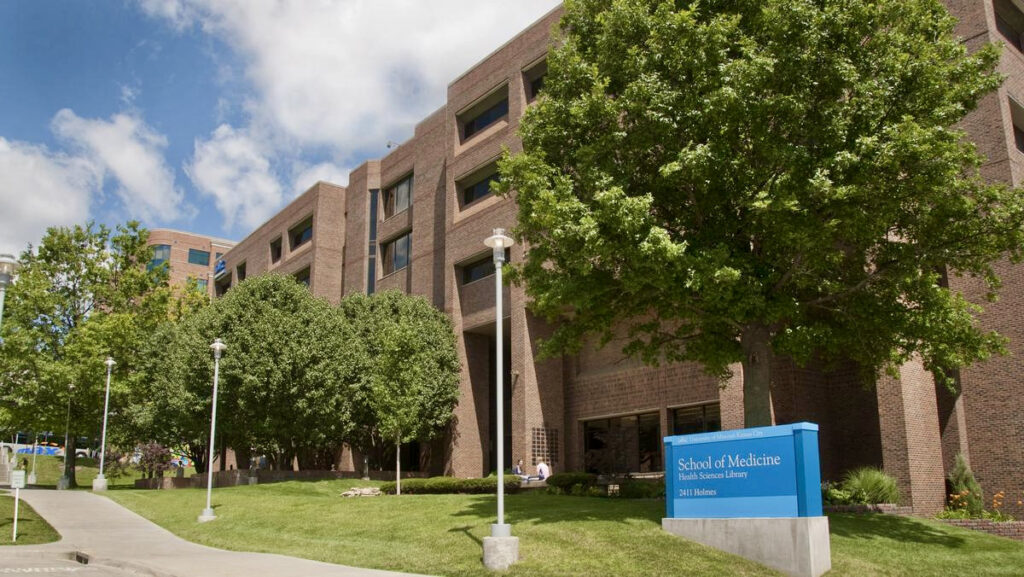
University of Missouri Kansas City School of Medicine (UMKC)
The University of Missouri Kansas City’s SOM is known for its unique accelerated BA/MD program, which graduates medical students in six years, straight from high school. Its systems-based and patient-oriented curriculum inspires an exceptional number of UMKC graduates to practice in medically underserved areas.
Though UMKC has “Kansas City” in the name, it’s not one of the medical schools in Kansas City — its campus is located in Springfield, MO.
The school offers an accelerated MA/MD program and a traditional four-year MD program.
School Highlights
UMKC uses a “docent system” that groups students of various years and a cadre of faculty of clinicians to learn from one another in various clinical experiences. Clinical training is very treatment-centered and takes place in high-volume hospitals throughout the region. The school was awarded over $44 million in research funding in 2021 for studies in biomaterials, population health, transformative education, and more.
UMKC U.S. News and World Report Rankings:
- #52 in Best Medical Schools: Primary Care
- #85 in Best Medical Schools: Research
- #29 in Most Graduates Practicing in Medically Underserved Areas
- #88 in Most Graduates Practicing in Rural Areas
- #88 in Most Diverse Medical Schools
- #99 in Most Graduates Practicing in Primary Care Fields
UMKC Med-Colleges.com Ratings:
- Overall: 5/5
- Curriculum: 5/5
- Teaching: 4.5/5
- Safety: 2/5
Med-Colleges.com also ranks UMKC #4 Public Health School in Public Health (state) and #30 in General Medicine (regional).
Selection Factors
UMKC’s Council on Selection uses a holistic review process to consider all aspects of an applicant’s file. The Council members looks for the fulfillment of AAMC’S Core Competencies, as well as the school’s own competencies:
- Personal and Professional Development
- Systems-Based Practice
- Practice-Based Learning
- Professionalism and Ethical Reasoning
- Communication and Interpersonal Skills
How Hard Is It to Get Into University of Missouri Kansas City School of Medicine?
- Acceptance Rate: 7% (BA/MD), 20% (MD)
- Average GPA: 3.9 (MD)
- Average MCAT Score: 507 (MD)
- Average ACT: 32 (BA/MD)
- Average SAT: 1420 (BA/MD)
The secondary essay for UMKC usually includes 1-2 essay prompts with 150-word response limits.
For a more in-depth look at how to get into UMKC, see: How to Get Into UMKC Medical School: The Definitive Guide (2022)
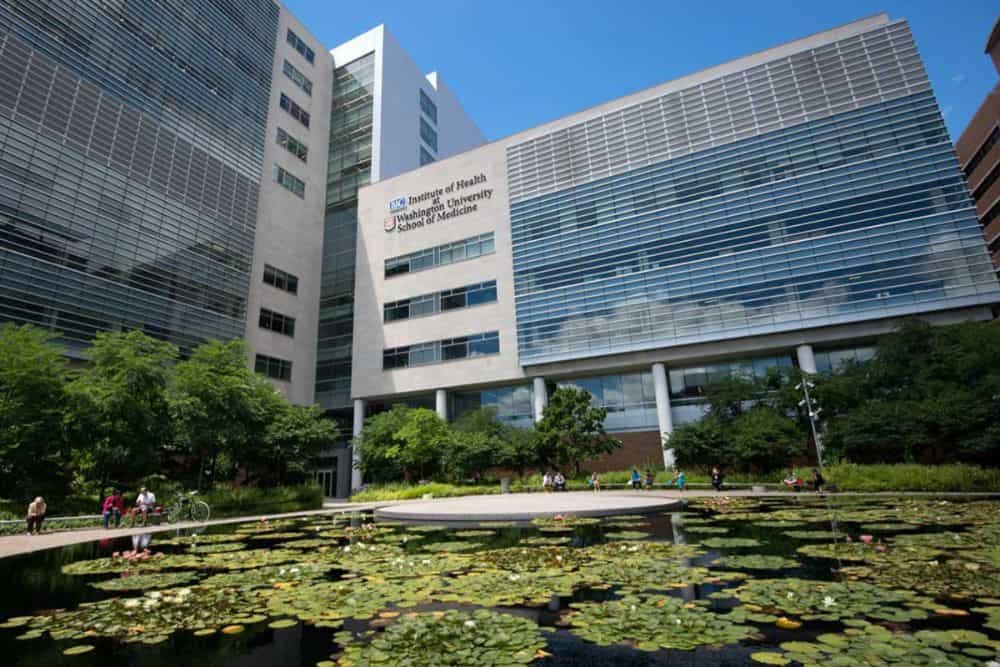
Washington University School of Medicine in St. Louis (WUSTL SOM)
WUSTL SOM was established in 1891 and ranks #1 for medical research in Missouri. The school has produced or employed over 20 Nobel laureates. WUSTL SOM is one of two medical schools in St. Louis.
The school offers a traditional four-year MD degree, two MD/PhD degree programs, and several dual degrees, including MD/MSCI, MD/MPHS, and MD/MPH.
School Highlights
Washington University’s SOM in St. Louis boasts high national rankings in numerous medical specialties. With some of the best medical programming in the nation and nearly 100 clinical training programs, Washington University is a top destination for medical students.
WUSTL SOM U.S. News and World Report Rankings:
- #56 in Best Medical Schools: Primary Care
- #11 in Best Medical Schools: Research
- #9 in Anesthesiology
- #7 in Internal Medicine
- #9 in OB/GYN
- #9in Surgery
WUSTL SOM Med-Colleges.com Ratings:
- Overall: 5/5
- Curriculum: 5/5
- Teaching: 4.5/5
- Safety: 1.5/5
Med-Colleges.com also ranks WUSTL SOM #1 in General Medicine, Public Health, Biomedical Sciences, and Genetic Science (state) and #13 in General Medicine (national).
Selection Factors
The Admissions Committee looks for qualities such as intellectual curiosity, maturity, leadership potential, and a commitment to medicine and helping others. The Committee also considers an applicant’s academic record and puts special emphasis on letters of recommendation.
How Competitive is Washington University School of Medicine?
Though WUSTL SOM does not list minimum GPA and MCAT requirements, we can look at admissions statistics for a better idea of how competitive the applicant pool is.
- Acceptance Rate: 7.5%
- Average Cumulative GPA: 3.87
- Average MCAT Score: 520
To better prepare for applying to WUSTL SOM, make sure to check out Pre-Med Requirements: Everything You Need To Know.
Good Luck to You!
We hope this guide to medical schools in Missouri has been helpful. Be sure to explore our more in-depth guides for each school, linked above.
Whether your dream school is public, private, allopathic, or osteopathic — our medical school admissions consulting has helped thousands of students just like you get into top medical schools across the country. We’re here to help every step of the way, so please reach out at any stage of your journey.

